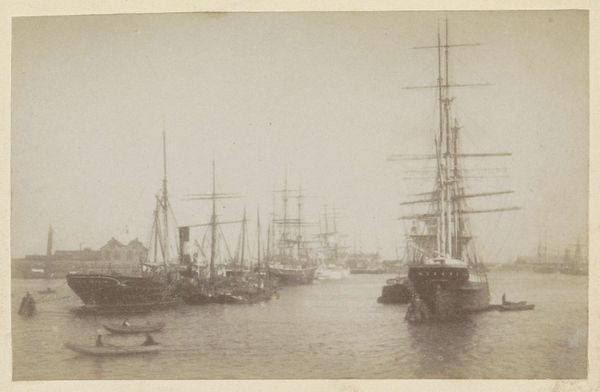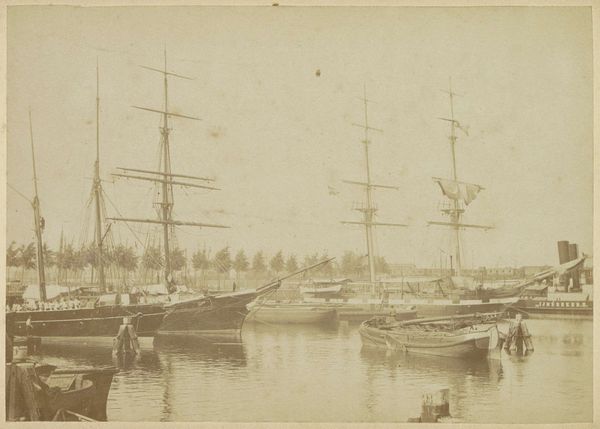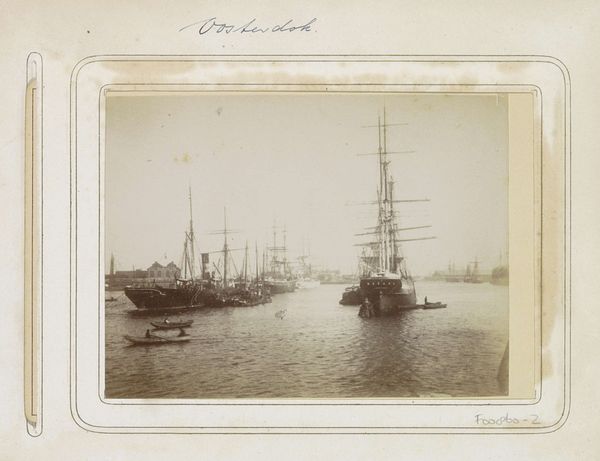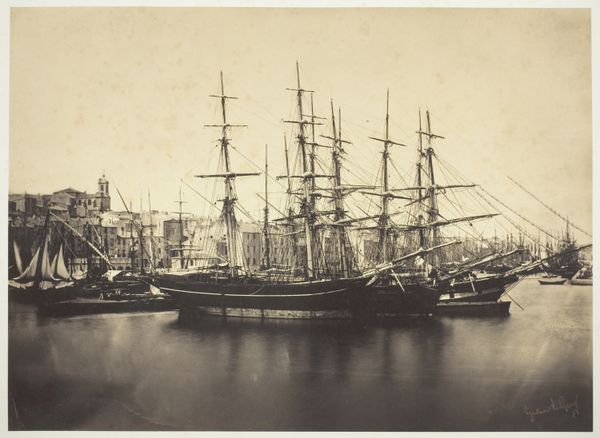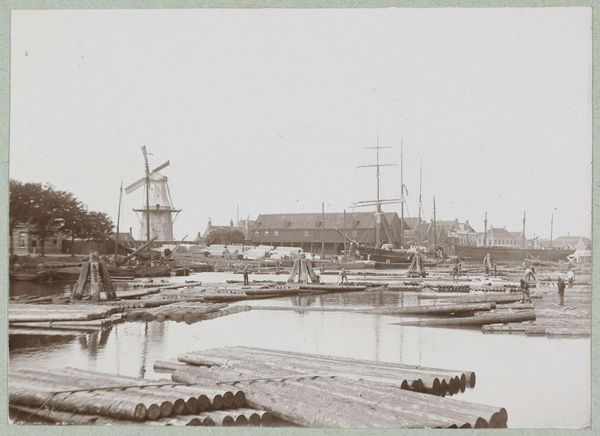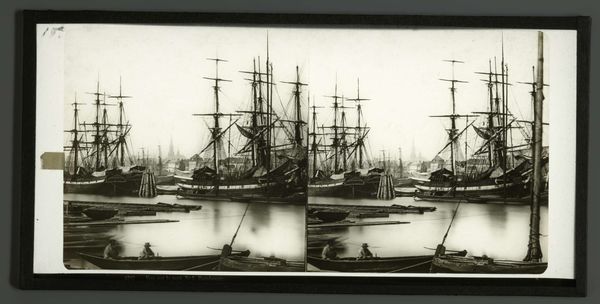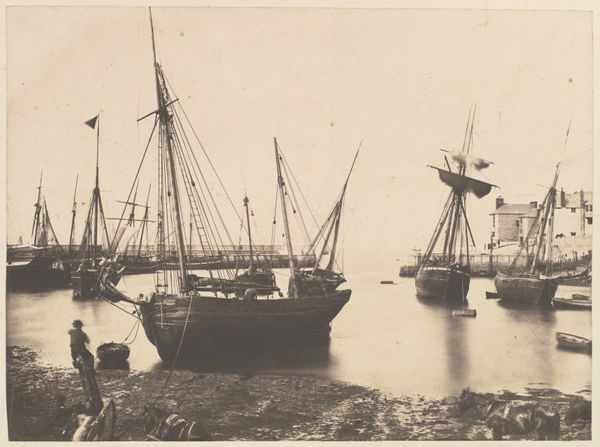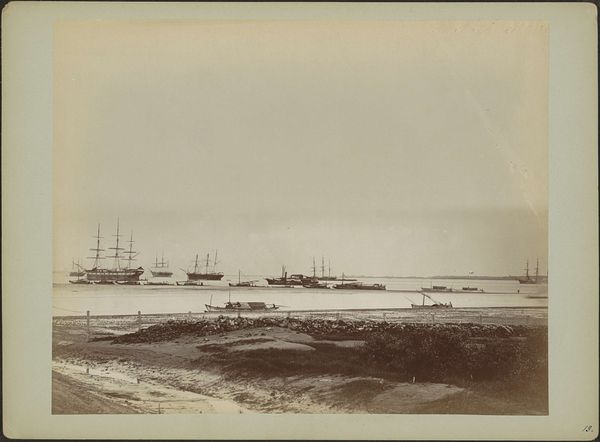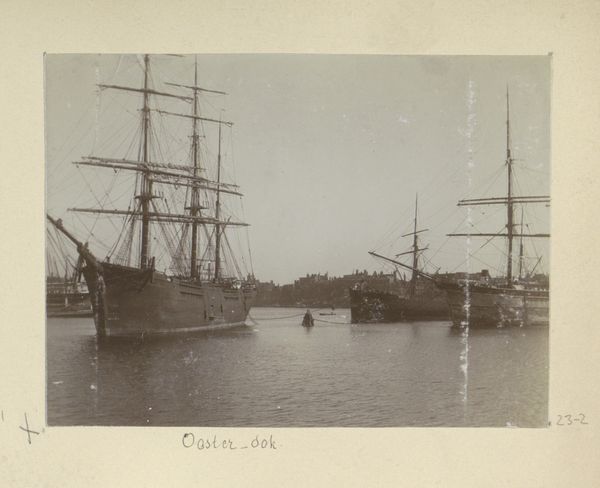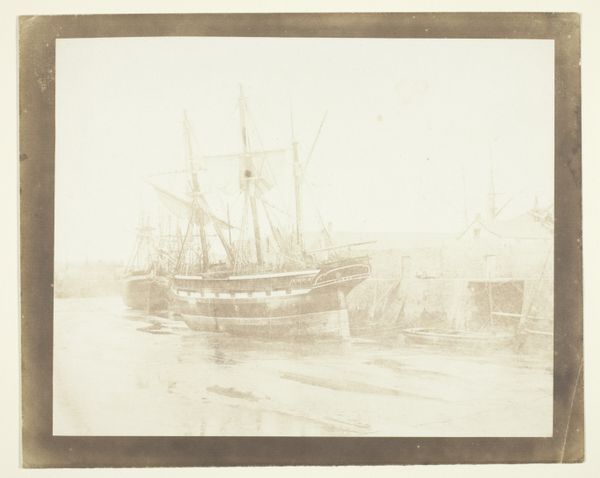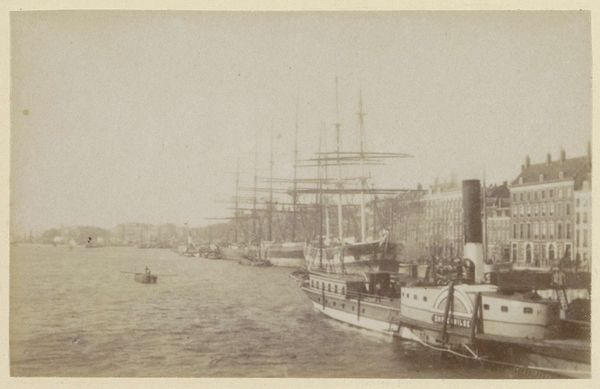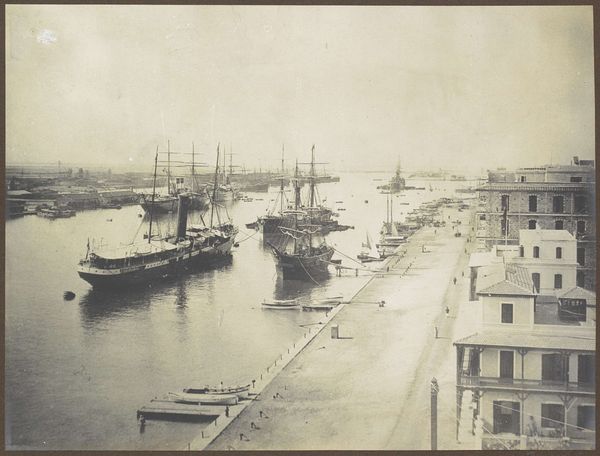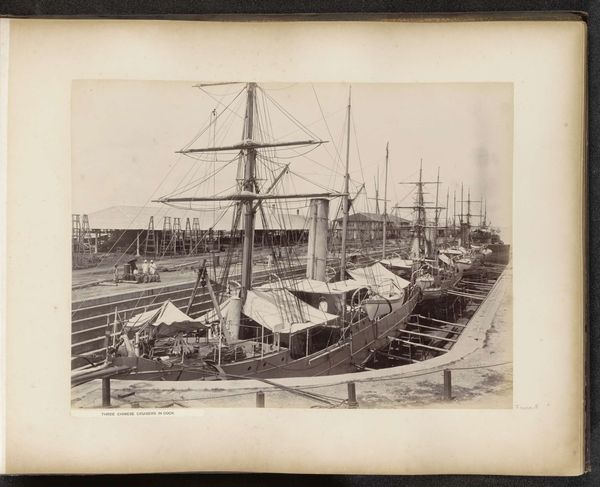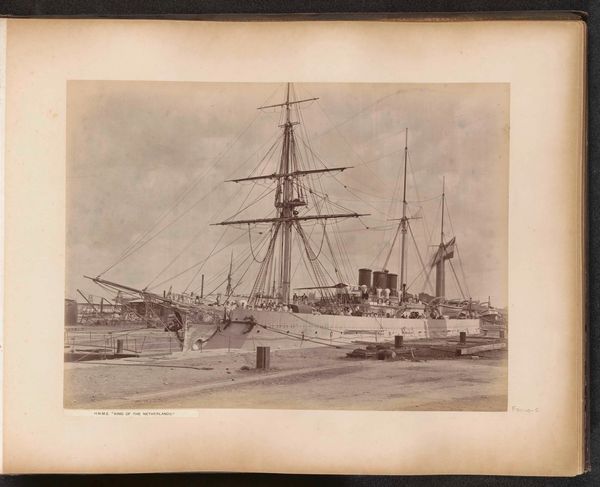
Dimensions: height 108 mm, width 166 mm
Copyright: Rijks Museum: Open Domain
Editor: So, this gelatin-silver print captures Andries Jager's "View of the Oosterdok in Amsterdam," sometime between 1860 and 1890. It feels so still, despite depicting a busy port. What's striking to you about this photograph? Curator: Well, let's consider the materiality itself. This gelatin-silver print—a relatively new technology then—allowed for mass reproduction. It speaks to the industrialization of image-making, and how that intersected with Amsterdam's own industrial boom tied directly to maritime trade. Those ships represent complex networks of resource extraction, labor, and commodity exchange. Editor: So you see the photograph not just as a picture of ships, but as evidence of these larger economic systems? Curator: Precisely! Think about the labor involved in constructing these ships, the sourcing of the wood, metal, and canvas, and then the production of the photographic materials themselves. These materials link the artwork directly to very specific systems of production. How does Jager, as an artist, choose to represent that? Is he celebrating progress, or is there perhaps a more nuanced perspective evident? Editor: It’s interesting you say that. The hazy quality and soft focus makes it feel less like a documentary photograph and more… atmospheric? Almost romantic? Curator: That soft focus is key. By embracing pictorialism, Jager elevated photography beyond mere documentation, asserting its artistic status. But that very "artistic" choice also masks the harsh realities of labor and exploitation underpinning those beautiful ships. It prompts us to think about how the technology shapes not just the image, but also what gets omitted from it. Editor: That makes me look at it in a totally new way. The print, the ships… they are all connected to global networks of labor and materials. It’s less about what’s depicted and more about *how* it’s made and what the making implies. Thanks! Curator: Exactly! Recognizing the materiality demystifies the image and shows that the choices the artist makes are important within an economy of production and representation.
Comments
No comments
Be the first to comment and join the conversation on the ultimate creative platform.
